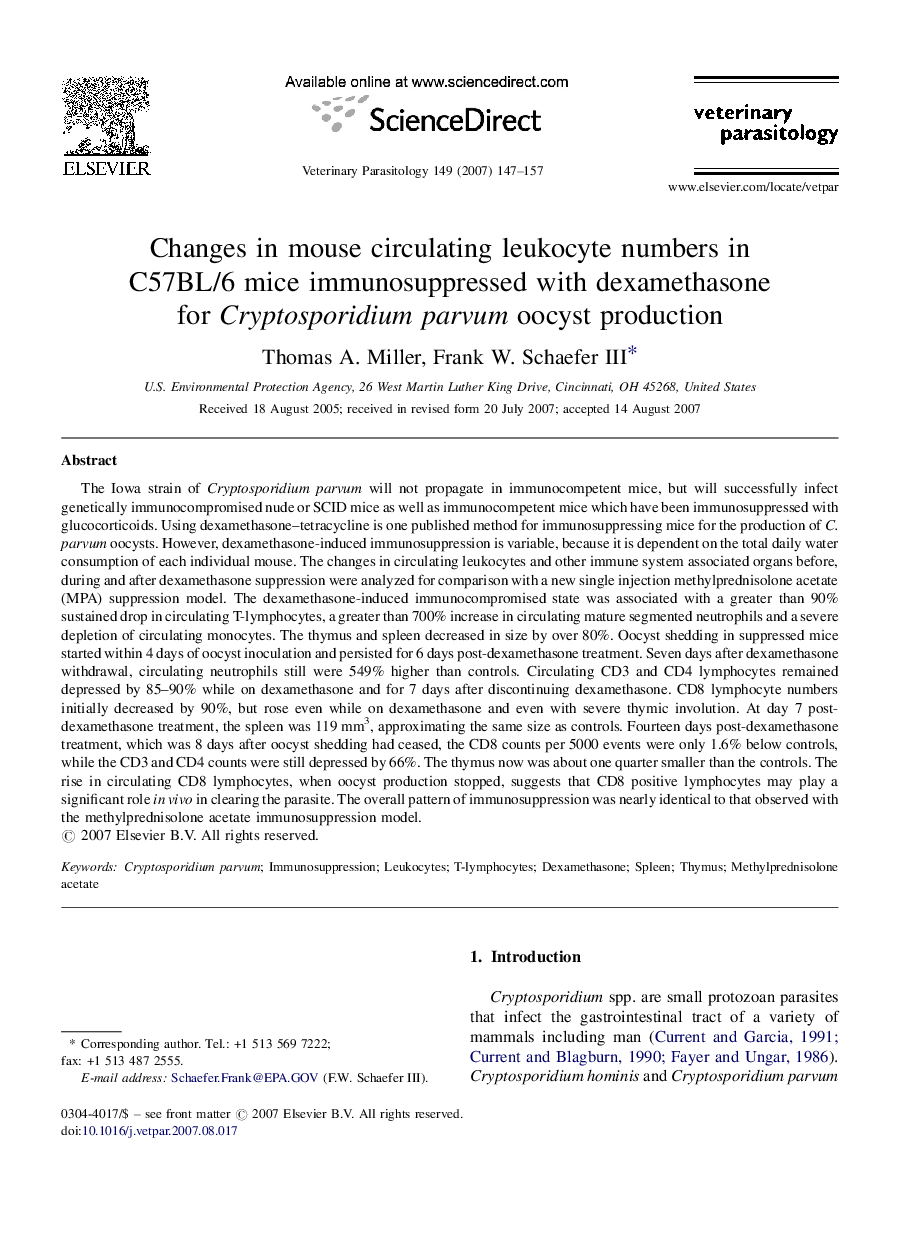| کد مقاله | کد نشریه | سال انتشار | مقاله انگلیسی | نسخه تمام متن |
|---|---|---|---|---|
| 2471887 | 1555776 | 2007 | 11 صفحه PDF | دانلود رایگان |

The Iowa strain of Cryptosporidium parvum will not propagate in immunocompetent mice, but will successfully infect genetically immunocompromised nude or SCID mice as well as immunocompetent mice which have been immunosuppressed with glucocorticoids. Using dexamethasone–tetracycline is one published method for immunosuppressing mice for the production of C. parvum oocysts. However, dexamethasone-induced immunosuppression is variable, because it is dependent on the total daily water consumption of each individual mouse. The changes in circulating leukocytes and other immune system associated organs before, during and after dexamethasone suppression were analyzed for comparison with a new single injection methylprednisolone acetate (MPA) suppression model. The dexamethasone-induced immunocompromised state was associated with a greater than 90% sustained drop in circulating T-lymphocytes, a greater than 700% increase in circulating mature segmented neutrophils and a severe depletion of circulating monocytes. The thymus and spleen decreased in size by over 80%. Oocyst shedding in suppressed mice started within 4 days of oocyst inoculation and persisted for 6 days post-dexamethasone treatment. Seven days after dexamethasone withdrawal, circulating neutrophils still were 549% higher than controls. Circulating CD3 and CD4 lymphocytes remained depressed by 85–90% while on dexamethasone and for 7 days after discontinuing dexamethasone. CD8 lymphocyte numbers initially decreased by 90%, but rose even while on dexamethasone and even with severe thymic involution. At day 7 post-dexamethasone treatment, the spleen was 119 mm3, approximating the same size as controls. Fourteen days post-dexamethasone treatment, which was 8 days after oocyst shedding had ceased, the CD8 counts per 5000 events were only 1.6% below controls, while the CD3 and CD4 counts were still depressed by 66%. The thymus now was about one quarter smaller than the controls. The rise in circulating CD8 lymphocytes, when oocyst production stopped, suggests that CD8 positive lymphocytes may play a significant role in vivo in clearing the parasite. The overall pattern of immunosuppression was nearly identical to that observed with the methylprednisolone acetate immunosuppression model.
Journal: Veterinary Parasitology - Volume 149, Issues 3–4, 10 November 2007, Pages 147–157